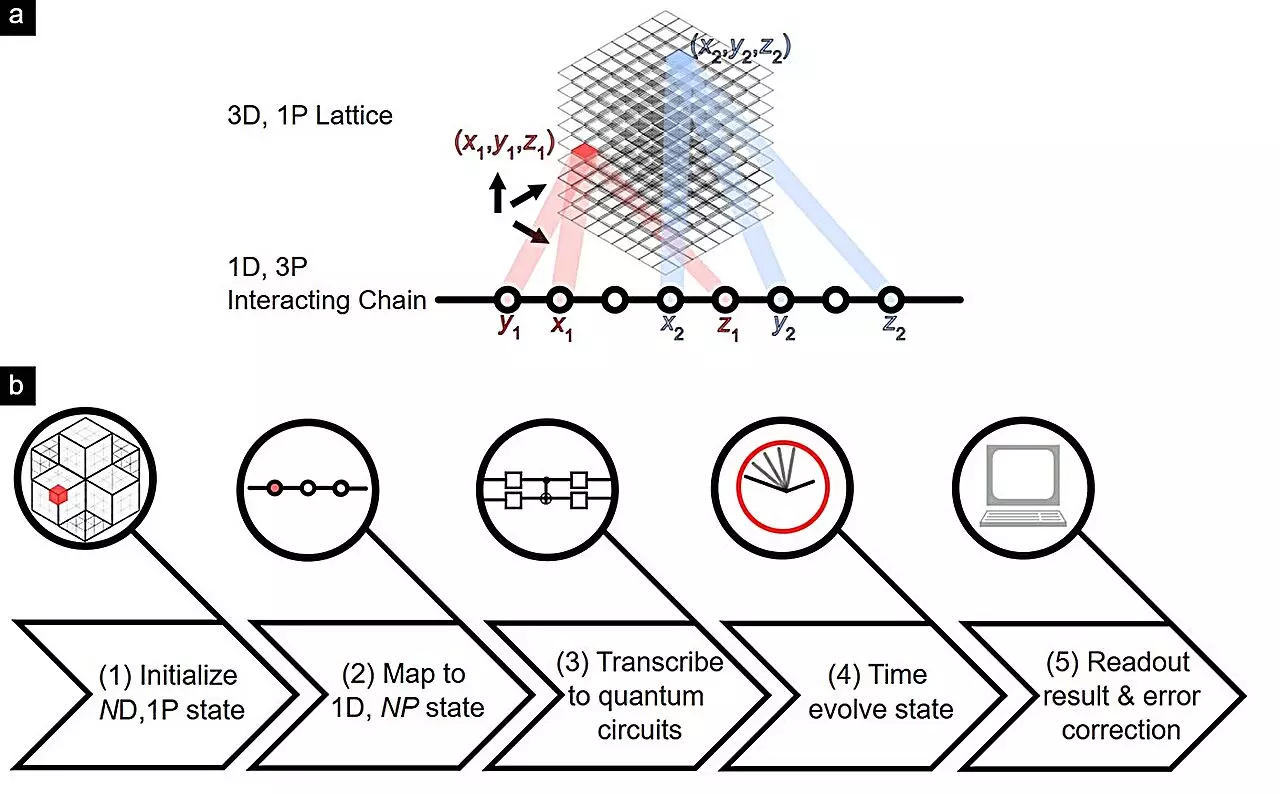Researchers at the National University of Singapore (NUS) have made significant progress in simulating higher-order topological (HOT) lattices using digital quantum computers. These complex lattice structures have the potential to enhance our understanding of advanced quantum materials and their robust quantum states, which are increasingly important in various technological applications.
The study of topological states of matter, including their HOT counterparts, has garnered significant interest from physicists and engineers alike. The discovery of topological insulators, which conduct electricity exclusively on their surfaces or edges while remaining insulating within, has paved the way for groundbreaking developments in material science. These materials exhibit unique mathematical properties of topology, enabling electrons to flow along edges without being hindered by defects or deformations. As a result, devices made from topological materials offer substantial potential for more resilient transport and signal transmission technologies.
Led by NUS Assistant Professor Lee Ching Hua, a team of researchers has devised a scalable method for encoding large, high-dimensional HOT lattices into simple spin chains on digital quantum computers. By harnessing the immense information storage capabilities of quantum computer qubits and minimizing resource requirements in a noise-resistant manner, the team has achieved unprecedented accuracy in simulating advanced quantum materials. This breakthrough opens new possibilities in the realm of topological material engineering, showcasing the potential of digital quantum computers in exploring cutting-edge research avenues.
Despite the challenges posed by current noisy intermediate-scale quantum (NISQ) devices, the research team has successfully measured the dynamics of topological states and protected mid-gap spectra of HOT lattices with remarkable precision. This accomplishment is attributed to the utilization of advanced error mitigation techniques developed in-house. By pushing the boundaries of current quantum technology, the team has demonstrated the capacity to delve into uncharted territories in material engineering, setting the stage for transformative advancements in the field.
The ability to simulate high-dimensional HOT lattices marks a significant advancement in quantum materials research, offering novel insights into the behavior of topological states. This development not only enriches our understanding of complex materials but also hints at the prospect of achieving true quantum advantage in the future. By leveraging the capabilities of digital quantum computers, researchers have expanded the horizons of material engineering, paving the way for innovative solutions and breakthroughs in the realm of quantum technology.


Leave a Reply